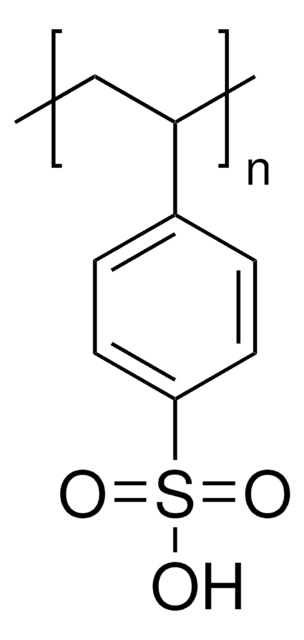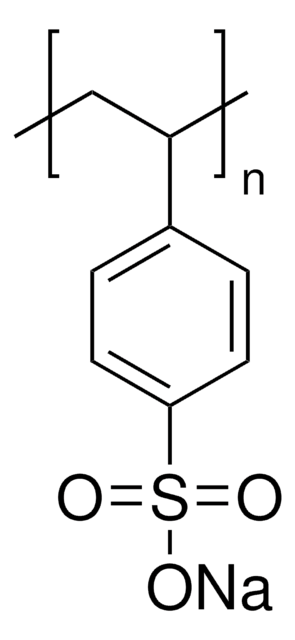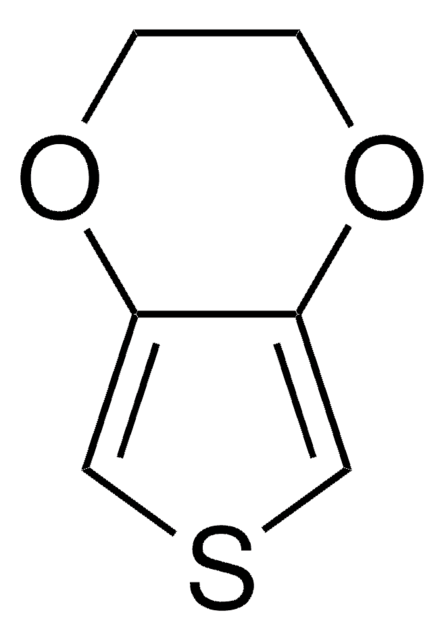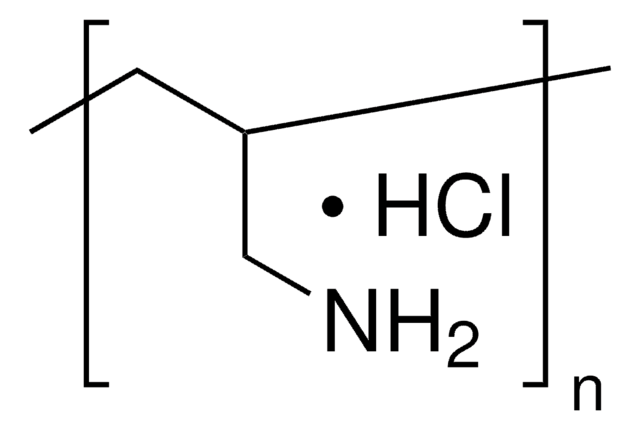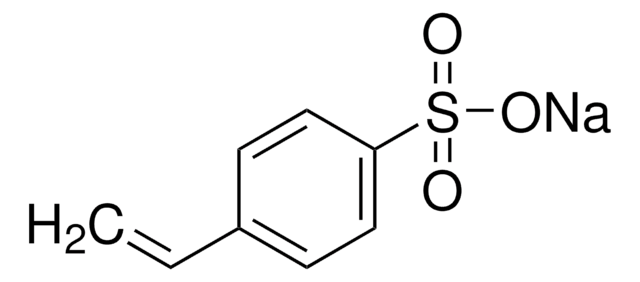243051
Poly(sodium 4-styrenesulfonate)
average Mw ~70,000
Synonym(s):
PSS, Poly(4-styrenesulfonic acid) sodium salt
About This Item
Recommended Products
form
powder or solid
Quality Level
mol wt
average Mw ~70,000
viscosity
15-55 cP, 20 %(25 °C, Brookfield)(lit.)
mp
460 °C (dec.)
solubility
water and lower glycols: soluble
density
0.801 g/mL at 25 °C (lit.)
InChI
1S/C8H8O3S/c1-2-7-3-5-8(6-4-7)12(9,10)11/h2-6H,1H2,(H,9,10,11)
InChI key
MAGFQRLKWCCTQJ-UHFFFAOYSA-N
Looking for similar products? Visit Product Comparison Guide
Related Categories
General description
Application
Features and Benefits
Storage Class Code
11 - Combustible Solids
WGK
WGK 2
Flash Point(F)
Not applicable
Flash Point(C)
Not applicable
Personal Protective Equipment
Certificates of Analysis (COA)
Search for Certificates of Analysis (COA) by entering the products Lot/Batch Number. Lot and Batch Numbers can be found on a product’s label following the words ‘Lot’ or ‘Batch’.
Already Own This Product?
Find documentation for the products that you have recently purchased in the Document Library.
Customers Also Viewed
Articles
Our research impacts on the hydrogen energy economy through the development of “smart” nanofilms for the protection of metal hydrides against air and moisture, while permitting release of hydrogen gas through these semi permeable nanofilms.
Professor Rivnay (Northwestern University, USA) discusses using organic mixed conductors as an alternative to efficiently bridge the ionic world of biology with contemporary microelectronics.
We present an article that discusses two applications in particular; first, using these layers as polyelectrolyte membranes to control permeability.
Our team of scientists has experience in all areas of research including Life Science, Material Science, Chemical Synthesis, Chromatography, Analytical and many others.
Contact Technical Service